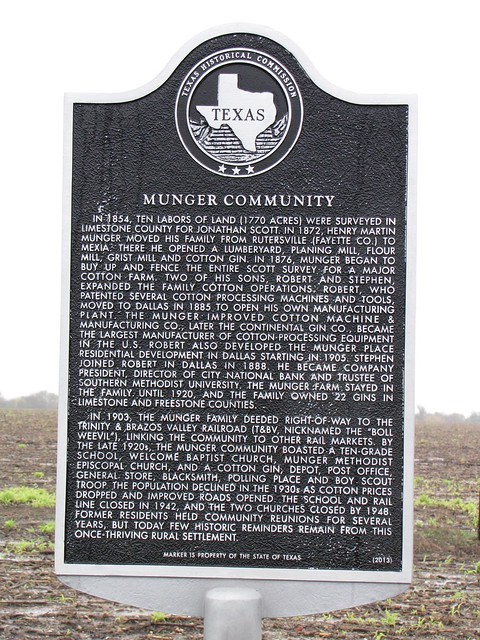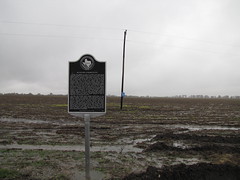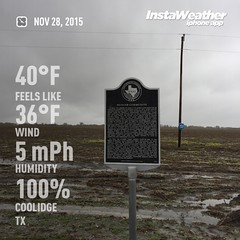Munger Community In 1854, Ten Labors of Land (1770 acres) were surveyed in Limestone County for Jonathan Scott. In 1872, Henry Martin Munger moved his family from Rutersville (Fayette Co.) To Mexia. There he opened a lumberyard, planing mill, flour mill, grist mill and cotton gin. In 1876, Munger began to buy up and fence the entire Scott survey for a major cotton farm. Two of his sons, Robert and Stephen, expanded the family cotton operations. Robert, who patented several cotton processing machines and tools, moved to Dallas in 1885 to open his own manufacturing plant. The Munger Improved Cotton Machine & Manufacturing Co., later the Continental Gin Co., became the largest manufacturer of cotton-processing equipment in the U.S. Robert also developed the Munger place residential development in Dallas starting in 1905. Stephen joined Robert in Dallas in 1888. He became company president, director of City National Bank and trustee of Southern Methodist University. The Munger farm stayed in the family until 1920, and the family owned 22 gins in Limestone and Freestone counties. In 1903, the Munger family deeded right-of-way to the Trinity & Brazos Valley Railroad (T&BV, nicknamed the “Boll Weevil”), linking the community to other rail markets. By the late 1920s, the Munger community boasted a ten-grade school, Welcome Baptist Church, Munger Methodist Episcopal Church, and a cotton gin, depot, post office, general store, blacksmith, polling place and boy scout troop. The population declined in the 1930s as cotton prices dropped and improved roads opened. The school and rail line closed in 1942, and the two churches closed by 1948. Former residents held community reunions for several years, but today few historic reminders remain from this once-thriving rural settlement. Marker is Property of the State of Texas (2013)
Subjects
None identified yet. Subjects are curated by hand so please bear with us.



